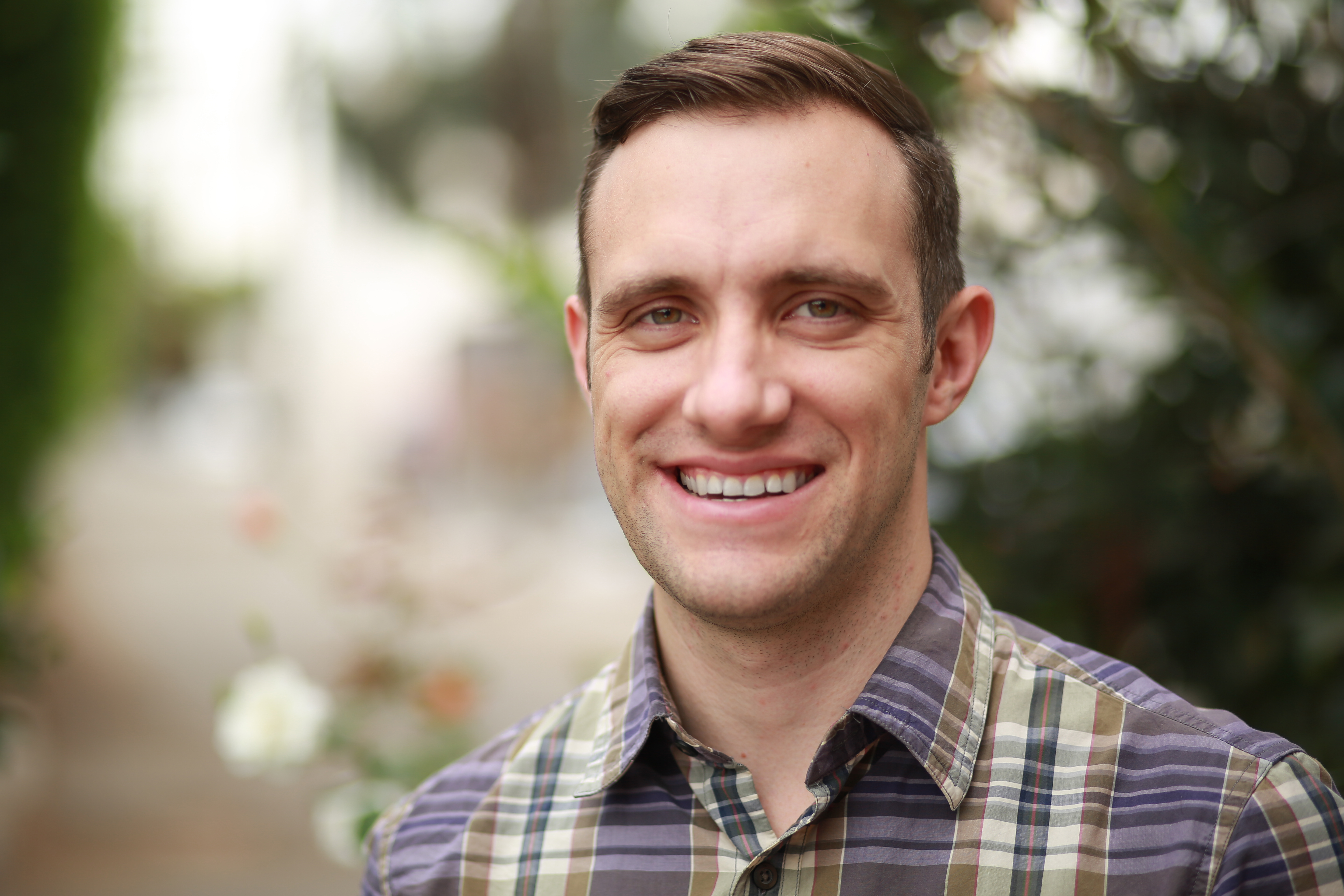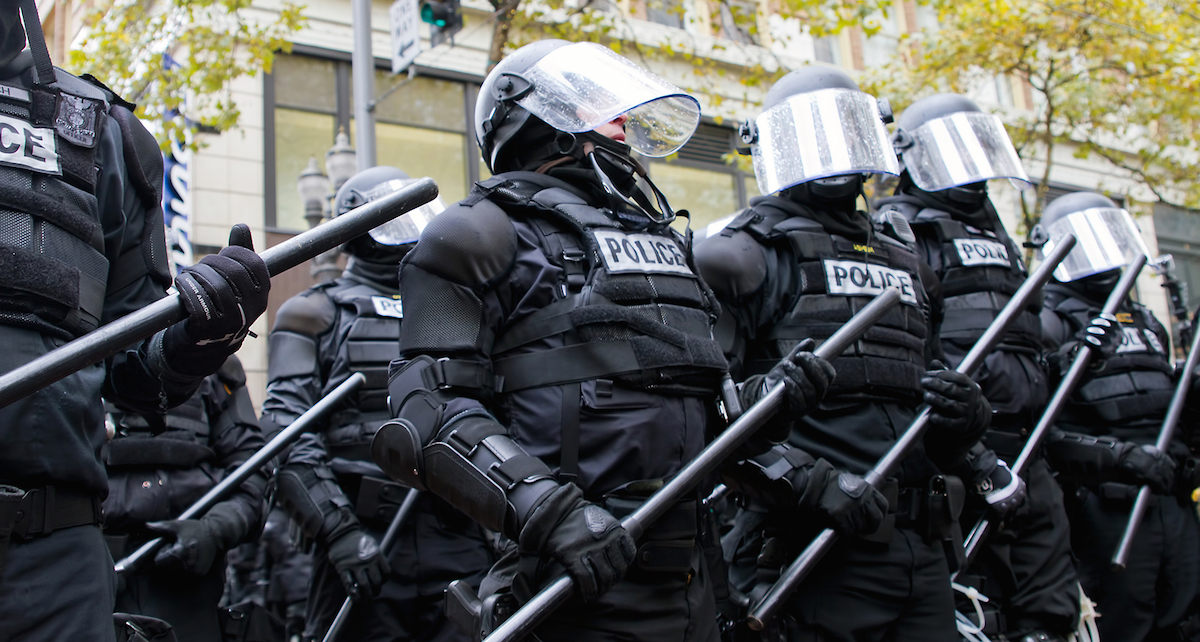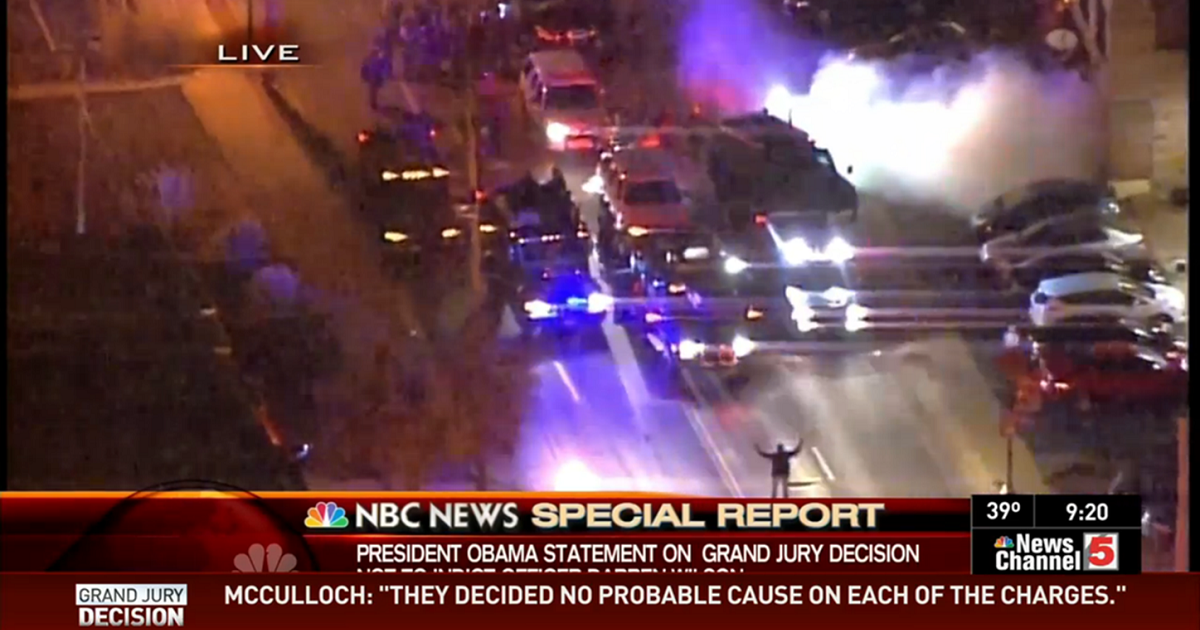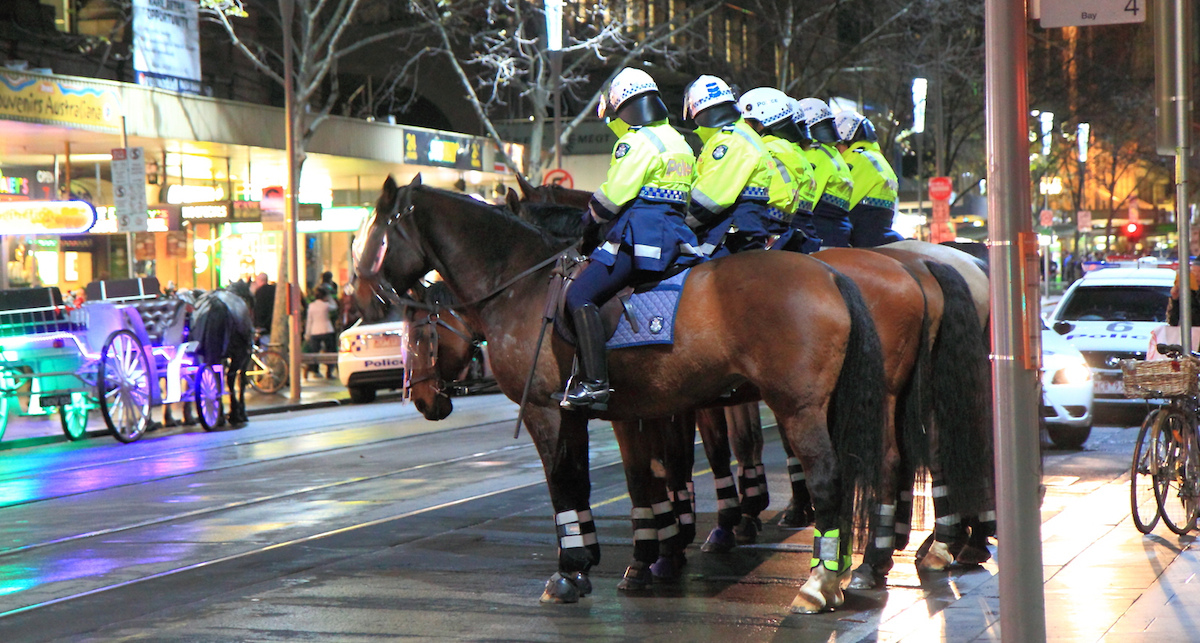Berkeley Police Just Showed Us Exactly How You Should NOT Handle A Protest

By:
This video shows clashes between demonstrators and police in Berkeley, Calif. on Dec. 6th. Needless to say, the images are stark -- police pushing protestors, hitting some with batons, and using smoke bombs.
There has to be a better way to balance safety and the First Amendment, right?
Radley Balko -- who covers police militarization for the Washington Post -- investigated what we're doing wrong earlier this year. Balko interviewed numerous law enforcement personnel, and here's what he found:
1. Police officers should not look like soldiers.

Contrary to some police doctrines, some police officers told Balko that dressing officers in military garb does not scare protestors into order. Instead, it actually ramps up the feeling of imminent conflict. For example, Jerry Wilson, who took over as police chief of Washington D.C. shortly after the riots in that city in the wake of Martin Luther King, Jr.'s assassination, believed that appearing as a hostile, military force actually invited conflict.
"That didn’t mean Wilson didn’t prepare," Balko wrote. "[B]ut he put his riot control teams in buses, then parked the buses close by, but out of sight of protesters. Appearances were important. In general, instead of the usual brute force and reactionary policing that tended to pit cops against citizens—both criminal and otherwise—Wilson believed that cops were more effective when they were welcomed and respected in the neighborhoods they patrolled."
Balko notes that violence and riots declined in Washington during Wilson's tenure.
There was a completely different response in Ferguson and Berkeley, where police took an aggressive stance similar to what we saw in Seattle during the G-8 protests in 1999 or in New York during the height of Occupy Wall Street. Police came out in riot gear, looking like soldiers.
Norm Stamper, who was Seattle's police chief in 1999, regrets his decision to forcefully oppose the protestors.
“We gassed fellow Americans engaging in civil disobedience,” Stamper told Balko. “We set a number of precedents, most of them bad. And police departments across the country learned all the wrong lessons from us. That’s disheartening. So disheartening. I mean, you look at what happened to those Occupy protesters at U.C. Davis, where the cop just sprays them down like he’s watering a bed of flowers, and I think that we played a part in making that sort of thing so common—so easy to do now. It’s beyond cringe-worthy. I wish to hell my career had ended on a happier note.”

2. Don't set arbitrary rules that you'll need to enforce.
We saw this a lot in Ferguson. Each night, the police decide that protestors would have to move. Or that they would have to stand still. Or that they would have to stop at certain streets. Or that they had to disperse at a certain hour. The protestors would resist. Then all hell would break loose.
Balko's research says this routine is ineffective. Restrictions only make protestors feel that they are not free to demonstrate. Further, it puts the police in the difficult position of either enforcing a rule and showing strength or allowing it to be broken and sending a message that they are not in control.
"When you establish arbitrary rules that have no basis in law, the police then feel they have to enforce those rules or they look illegitimate," said Maj. Max Geron of the Dallas Police Department. "They can set these rules with the best of intentions, but they just end up creating more problems for themselves.”
You see this in the above video. Berkeley police decide that protestors could go no farther than a certain street. When the protestors reached it, police started to push then back, and the violence began.
Why restrict the protest's movement in the first place? Is the rule worth the violence it causes?
We can't know for sure -- we were not there but, generally, what Geron is saying is that police should have a very good reason any time the police are going to oppose the protestors because it will always escalate the tension.
3. Work with the protestors.

The safest demonstrations seem to be those where the police work with the leaders of the protest. For example, the two sides should work out the ground rules ahead of time. The police should explain their priorities, and promise the protestors that if those expectations are met, there will be no violence. For their part, protestors should obey basic ground rules and ensure that their group does not damage property or hurt anyone.
I was struck by how well this approach worked in Salt Lake City during the Occupy protests in 2011. When the Salt Lake city council said they wanted the protestors to leave a camp that had been set up, Salt Lake's Police Chief Steve Burbank personally went to the scene. He met with the protestors and explained what was happening. He said that when the time came for the protestors to leave, he would give them options. They could either leave peacefully -- and receive assistance from officers in removing their belongings -- or they could be arrested. If the protestors wanted their arrest to be recorded by the media, the police would allow photographers and television crews to be present. (Oh and when the police did show up, they wore standard, everyday uniforms. Not riot gear.)
"Most of the 200 protesters left voluntarily," Balko wrote. "Some took advantage of Burbank’s offer to have his officers help with their belongings. Nineteen chose to be arrested. There was no violence, no rioting and little anger."
We can do this.
We should be able to have First Amendment expression and public safety. It just takes some effort from police. That effort, however, will only be present if leadership in our cities -- from the mayor down to the police chief -- prioritize First Amendment rights. The emphasis, Balko points out, should be to serve the community, not defeat the protestors.
